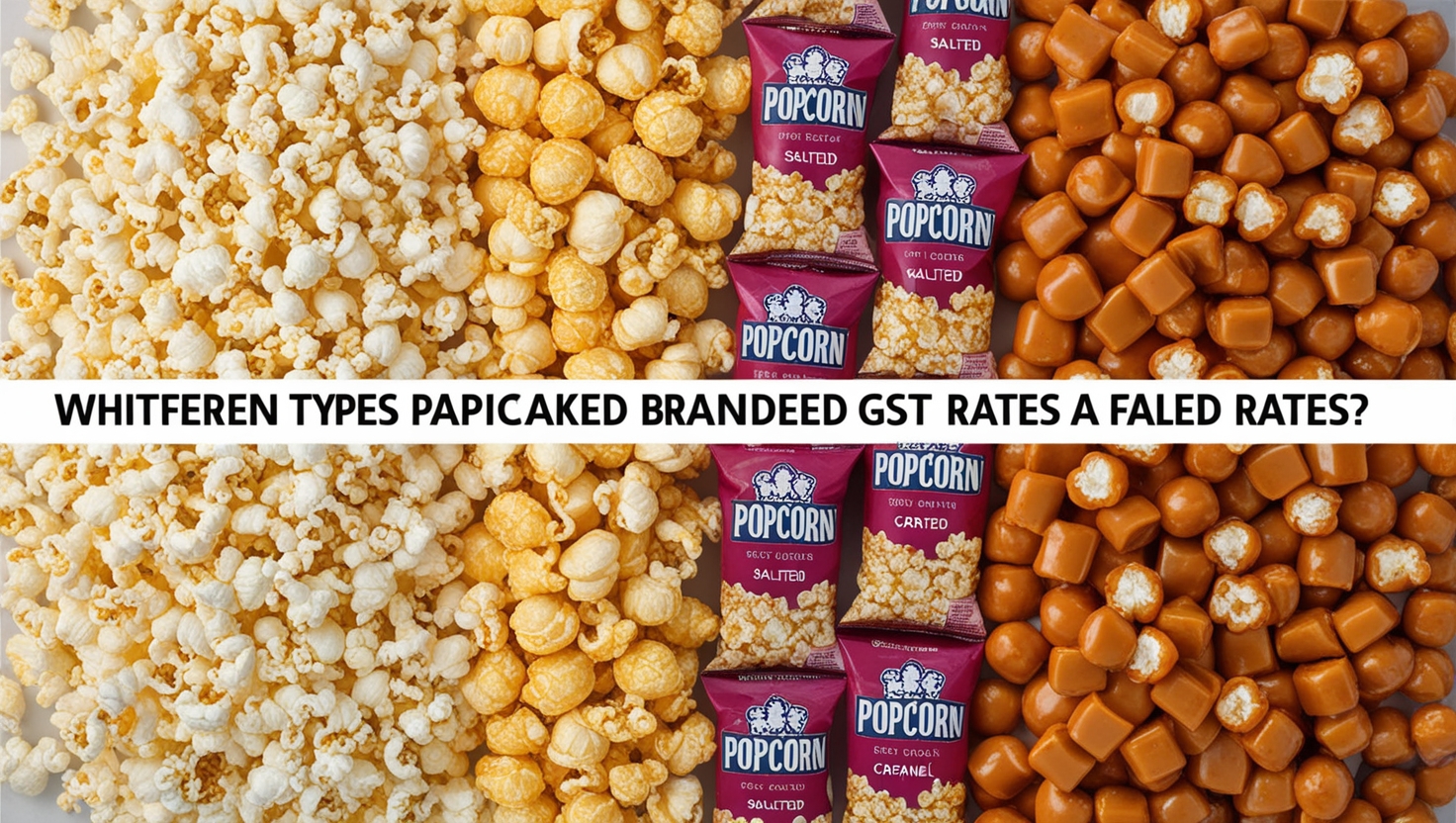Understanding the Tax on Popcorn in India: A Detailed Analysis
Popcorn, a beloved snack synonymous with movie theaters and leisure time, has recently become the center of a heated debate in India due to the Goods and Services Tax (GST) Council’s clarification on its taxation. The Council’s decision to implement a tiered tax structure based on the type and preparation of popcorn has sparked discussions about tax complexity and its implications for consumers and businesses alike.
The GST Classification for tax on Popcorn

The GST Council has delineated the tax rates for popcorn into three distinct categories:
- Non-branded salted popcorn: This category, which includes popcorn mixed with salt and spices and sold in loose form, is classified as ‘namkeen’ and attracts a 5% GST. This rate applies to popcorn typically sold in movie theaters and similar venues.
- Pre-packaged and branded popcorn: Popcorn that is pre-packaged and carries a brand label falls under this category and is subject to a 12% GST. This classification aims to distinguish between loose, unbranded products and those that are commercially packaged and branded.
- Caramel popcorn: Due to the addition of sugar, caramel popcorn is categorized under ‘sugar confectionery’ and is subjected to an 18% GST. The rationale provided by the Finance Minister, Nirmala Sitharaman, is that products with added sugar are taxed at higher rates to account for their confectionery nature.
Rationale Behind the Tax Structure
Rationale Behind the Tax Structure
The GST Council’s decision to implement varying tax rates is based on the classification of goods under the Harmonized System (HS) nomenclature, an internationally standardized system of names and numbers for classifying traded products. Under this system, sugar confectionery items fall under HS code 1704 and attract an 18% GST, while namkeens are classified under HS code 2106 90 99, attracting a 5% GST when sold in non-pre-packaged form and 12% when pre-packaged and labeled.
This classification aims to standardize taxation across different types of products, ensuring that items with added sugars, which are considered confectioneries, are taxed at higher rates compared to savory snacks.

Public Reaction and Criticism for tax on popcorn
The announcement of this tiered tax structure has led to significant public outcry and criticism from various quarters:
- Economists’ Perspective: Former Chief Economic Adviser K V Subramanian criticized the move, stating that such complexity benefits bureaucrats but burdens citizens, questioning the minimal revenue benefits versus the inconvenience caused. His predecessor, Arvind Subramanian, also criticized the move for increasing complexity and irrationality in the tax system.
- Social Media Backlash: The decision has sparked a social media storm, with users creating memes and expressing confusion over the multiple tax slabs for a single product like popcorn. One widely circulated post on X (formerly Twitter) showed an image of a branded “salt caramel” popcorn packet, questioning how it would be taxed under the new system.
Clarifications from the Government
In response to the backlash, government sources have clarified that there has been no increase in GST rates on popcorn; rather, the Council has reiterated existing rates to resolve classification disputes. They emphasized that popcorn served in theaters in loose form will continue to attract a 5% GST, as applicable to ‘restaurant service’.
The government also highlighted that the varying GST rates are a consequence of the classification of commodities under different chapters of the HS system, which is used by over 200 countries and covers more than 98% of international trade. This system ensures uniformity in tax application across various product categories.
Tax on Popcorn: Implications for Consumers and Businesses
The tiered tax structure on popcorn has several implications:
- Consumers: Those purchasing non-branded, loose popcorn, such as that sold in movie theaters, will continue to pay a 5% GST. However, consumers opting for pre-packaged, branded, or caramel popcorn will face higher tax rates, potentially increasing the overall cost of these products.
- Businesses: Manufacturers and vendors of popcorn must now navigate the complexities of GST classifications to ensure compliance. This may involve adjusting pricing strategies to account for the varying tax rates, which could impact profit margins and consumer demand.
Conclusion
The GST Council’s clarification on the tax rates for different types of popcorn has illuminated the complexities inherent in product classification and taxation. While the intention is to standardize tax application based on product characteristics, the resulting tiered structure has led to public confusion and criticism. As the debate continues, it underscores the broader challenge of balancing tax policy with simplicity and fairness, ensuring that both consumers and businesses can navigate the system without undue burden.
For more update GST or Tax visit here.









